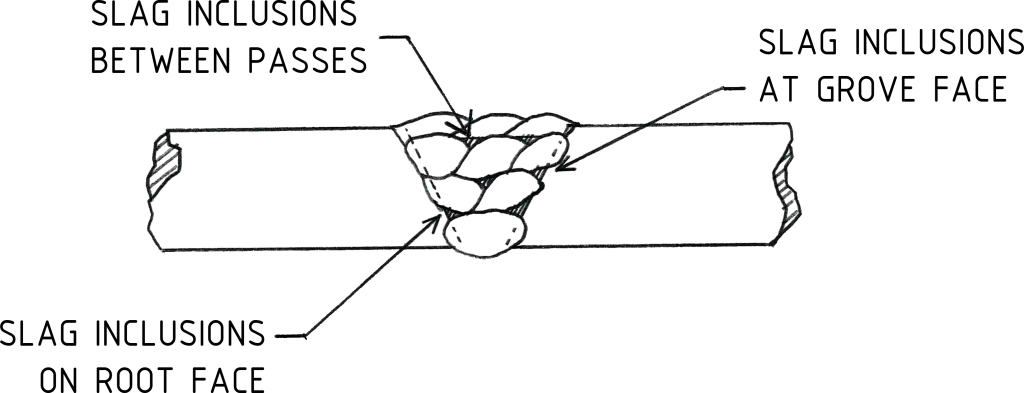55 Slag Inclusions
Slag is a nonmetallic product resulting from mutual dissolution (chemical reactions) of flux and nonmetallic impurities in some welding or brazing processes. Slag inclusions are nonmetallic materials that are formed by slag reactions and trapped in a weld.

Slag inclusions can occur between passes or at the weld face. Slag inclusions can also occur in welds made by flux shielded welding processes such as SMAW, FCAW, and SAW.
Slag inclusions have a lower specific gravity (density) than the surrounding metal and usually rise to the surface of molten metal, unless they become entrapped in the weld metal. Multiple-pass welds are more prone to slag inclusions than single-pass welds because slag from the preceding pass, if not completely removed when cleaning, will become entrapped in the subsequent pass.
Slag inclusions are detected by radiographic testing (RT) where they appear as dark lines, more or less interrupted, parallel to the edges of the weld. Slag inclusions are usually elongated and rounded, and run in the direction of the axis of the weld. Slag inclusions can be continuous, intermittent, or randomly spaced.
Slag Inclusion Prevention
Slag inclusions are prevented by using proper welding preparation, such as thoroughly removing slag from the weld and cleaning the weld between each pass of a multiple-pass weld. Failure to thoroughly remove slag between each pass increases the probability of slag entrapment and the production of a defective weld.
Complete and efficient slag removal requires that each weld bead be properly contoured and blend smoothly into the adjacent bead or base metal. Concave or flat beads that blend smoothly into the base metal or any adjoining beads minimize undercutting and avoid a sharp notch along the edge of the bead that can trap slag.

